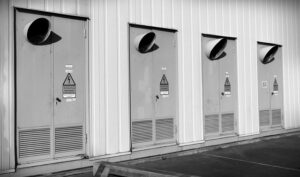Compact electric water heaters fit under kitchen sinks, offering space-saving instant hot water with precise temperature control. They heat and store water in a small reservoir, ensuring constant availability without energy waste. Ideal for smaller households or spaces with limited cabinet space, these tankless systems are environmentally friendly and efficient. Selecting the right size based on hot water demands (measured in GPM) promotes sustainable heating practices. Installation requires preparation, careful connections, correct positioning, and final checks. Regular cleaning and maintenance ensure peak performance.
“Transform your home’s plumbing with compact electric water heaters designed for under-sink installations. This efficient, space-saving solution offers numerous benefits, from instant hot water access to reduced energy costs. Ideal for modern kitchens and bathrooms, these heaters provide a seamless, streamlined alternative to traditional tank systems. In this guide, we’ll explore their advantages, help you choose the perfect size, walk through the installation process, and offer maintenance tips to ensure optimal performance.”
- Understanding Compact Electric Water Heaters
- Benefits of Under-Sink Installations
- Choosing the Right Size and Capacity
- Installation Process: Step-by-Step Guide
- Maintenance Tips for Optimal Performance
Understanding Compact Electric Water Heaters

Compact electric water heaters are designed to fit seamlessly under kitchen sinks, offering a practical and space-saving solution for residential electric heating needs. These innovative devices eliminate the traditional tank water heaters and instead provide instant hot water on demand. The electric storage heaters operate by quickly heating and storing water in a small reservoir, ensuring a constant supply when you need it most—whether it’s for morning coffee or showering after a long day.
Unlike tankless electric systems, which heat water as it flows through pipes, these compact models provide efficient energy use due to their precise temperature control. Point of use heaters ensure that hot water is instantly available, reducing the risk of cold surprises and minimizing energy wastage. This technology is ideal for smaller households or spaces with limited cabinet space, offering a modern and convenient home water heating alternative.
Benefits of Under-Sink Installations

Under-sink installations of compact electric water heaters offer numerous advantages for both homeowners and professionals alike. One of the key benefits is space optimization; these heaters fit seamlessly beneath the sink, maximizing limited kitchen real estate. This arrangement allows for a more organized and clutter-free workspace, a significant advantage in smaller kitchens or when dealing with restricted cabinet spaces.
Moreover, electric water heating systems under the sink are known for their energy efficiency, a factor that appeals to environmentally conscious folks. Tankless electric systems, also known as point of use heaters, provide hot water on demand, eliminating the need for large storage tanks. This not only reduces energy consumption but also minimizes heat loss, ensuring efficient home water heating. With instant access to hot water and advanced tankless technology, residential electric heaters are a smart choice for modern households seeking both convenience and sustainable living.
Choosing the Right Size and Capacity

When selecting a compact electric water heater for an under-sink installation, choosing the right size and capacity is paramount. It’s crucial to consider your household’s hot water demands, measured in gallons per minute (GPM). Typically, residential electric heaters offer capacities ranging from 5 to 10 gallons. For smaller households or specific applications like point of use heaters, a 5-gallon tankless electric system might suffice. However, larger families or those with high hot water usage may require an 8- to 10-gallon electric storage heater for adequate energy efficiency and consistent performance.
The right size ensures efficient heating without wasting energy. Tank water heaters and electric hot water systems with larger capacities cater to bustling households while minimizing temperature fluctuations. Conversely, smaller tankless electric systems or instant electric heaters are ideal for low-usage scenarios, providing on-demand, energy-efficient heating tailored to specific needs. This balance between capacity and demand not only ensures consistent hot water availability but also promotes sustainable home water heating practices.
Installation Process: Step-by-Step Guide

Installing a compact electric water heater under your sink is a straightforward process that can provide an efficient and convenient hot water solution for your home. Here’s a step-by-step guide to help you through the installation:
1. Prepare the Space: Begin by ensuring there’s adequate space beneath the sink for the new water heater. Turn off the main water supply valve to prevent any accidents during the installation. Remove the existing hot water lines from the tank (if applicable) and prepare the connections for the new electric heater.
2. Connect Water Lines: Attach the hot and cold water lines from your pipes to the respective ports on the electric water heater. Ensure all connections are secure and sealed properly using appropriate plumbing tape or seals to prevent leaks. Once the lines are connected, turn on the main water supply valve again to test for any leaks.
3. Electric Installation: Next, focus on the electrical aspect. Consult with an electrician if you’re unsure about the wiring requirements. Typically, a dedicated circuit and a suitable outlet near your sink area will be needed. Connect the electric heater’s power cord to the outlet, ensuring it complies with local electrical codes for water heating appliances.
4. Positioning and Mounting: Carefully lift the compact electric water heater into place beneath the sink. Secure it with the provided mounting hardware or brackets to ensure stability and prevent any movement during operation. Double-check that all components are securely fastened.
5. Final Checks: After completing the installation, conduct a series of tests. Run hot and cold water through the taps connected to the heater to ensure proper functioning. Check for any leaks at the water lines’ connections, and verify that the electric heater’s settings match your desired temperature preferences.
Maintenance Tips for Optimal Performance

To maintain your compact electric water heaters fitting under sink installations and ensure optimal performance, regular cleaning is essential. Begin by flushing the system periodically to remove any sediment or mineral buildup that may have accumulated in the lines. This process involves running hot water through the heater for a few minutes to flush out impurities. Additionally, inspect the connections for any signs of corrosion or damage, tightening as needed to maintain proper sealing and efficiency.
For tankless electric systems, such as point of use heaters and instant electric heaters, regular maintenance includes checking the temperature settings and ensuring they are aligned with your hot water needs. Keep an eye on any unusual noises or smells coming from the heater, which could indicate potential issues that require professional attention. Using energy-efficient heating methods, like setting timers for water heating, can also contribute to maintaining optimal performance and reducing utility costs, making these compact electric water heaters a practical choice for residential electric heaters and home water heating solutions.
Compact electric water heaters designed for under-sink installations offer a space-saving, efficient solution for modern kitchens. By understanding their benefits, choosing the right size, and following a simple installation guide, homeowners can enjoy the convenience of instant hot water without taking up valuable bench or cabinet space. Regular maintenance ensures optimal performance, making these heaters a practical and eco-friendly choice for any home.






